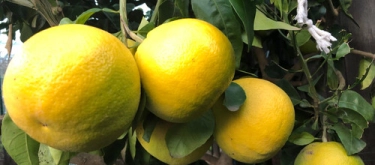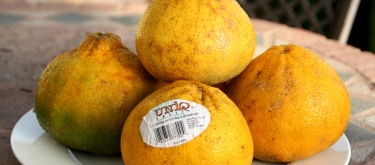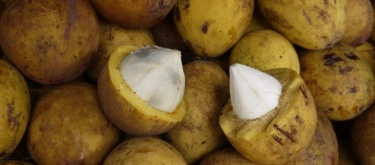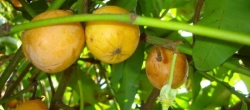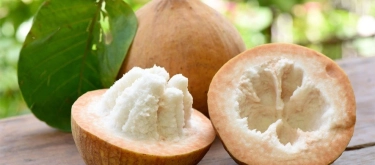Sweetie: Taste Profile, Aroma, Benefits and Health Risks
Sweetie (also known as Oroblanco, Pomelit; Citrus maxima × Citrus paradisi) is a hybrid citrus fruit originating from the cross between pomelo and white grapefruit, first cultivated in California in the 1950s. Renowned for its pleasantly mild sweetness, minimal bitterness, and reduced acidity compared to grapefruit, Sweetie has become popular globally as a refreshing alternative to traditional citrus fruits.
Sweetie fruit (also known as Oroblanco) is generally safe for consumption. However, individuals allergic to citrus fruits should exercise caution. Grapefruit-sensitive individuals should also avoid excessive intake due to potential medication interactions. Pregnant women can safely consume in moderation.
What does Sweetie taste like?
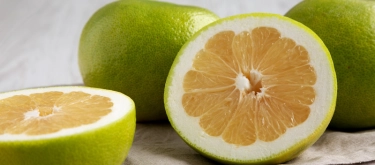
Complete Sensory Description:
Taste
Sweetie has a gently sweet, mildly tart flavor with minimal bitterness, balancing the sweetness of pomelo with the tangy freshness of grapefruit, enhanced by subtle floral and citrus undertones.
Aroma
The aroma is fresh, citrusy, and mildly sweet, characterized by delicate notes of grapefruit, pomelo, and subtle floral nuances reminiscent of orange blossom.
Texture
Externally, Sweetie features a thick, spongy rind, similar to pomelo, which peels easily. Internally, the pulp is juicy, tender, and segmented, containing fewer seeds than traditional grapefruit, offering a soft yet refreshingly juicy texture.
Appearance
Sweetie fruits are round to slightly flattened, measuring about 10–15 cm in diameter. The skin is thick and greenish-yellow, remaining greenish even when ripe. Inside, the flesh ranges from pale yellow to creamy-white.
In-depth Flavor Analysis:
Sweetie’s appealing flavor profile results from balanced sugar-acid ratios, primarily fructose and sucrose, paired harmoniously with citric and malic acids, significantly reducing typical grapefruit bitterness. Its mild sweetness, without pronounced bitterness, is due to lower levels of naringin—a bitter flavonoid common in grapefruit. Aromatic characteristics derive from volatile compounds such as limonene, myrcene, and linalool, delivering fresh citrus notes and gentle floral hints. Climate, ripeness, and cultivation methods influence sweetness intensity and aroma complexity. Fruits harvested later in maturity exhibit enhanced sweetness and reduced acidity, contributing to their characteristic mild taste.
Varieties and Culinary Applications:
Sweetie is a single hybrid variety, also known internationally as Oroblanco or Pomelit. Culinary uses include:
- Fresh Consumption: Typically eaten fresh, peeled and segmented, or cut in halves like grapefruit.
- Juices and Smoothies: Its mild, pleasant sweetness makes it ideal for juices, smoothies, and refreshing drinks.
- Salads: Frequently used in fruit salads, green salads, or seafood salads, complementing ingredients like avocado, shrimp, and leafy greens.
- Desserts and Baking: Incorporated into desserts, pastries, sorbets, and jellies, enhancing flavor complexity without excessive bitterness.
Selection and Storage:
When selecting Sweetie, choose heavy, firm fruits with smooth skin, free from blemishes or soft spots. Greenish-yellow coloration is normal even when ripe. Fruits can be stored at room temperature briefly or refrigerated for up to two weeks. Keep peeled segments refrigerated in sealed containers, consuming within several days for optimal freshness.
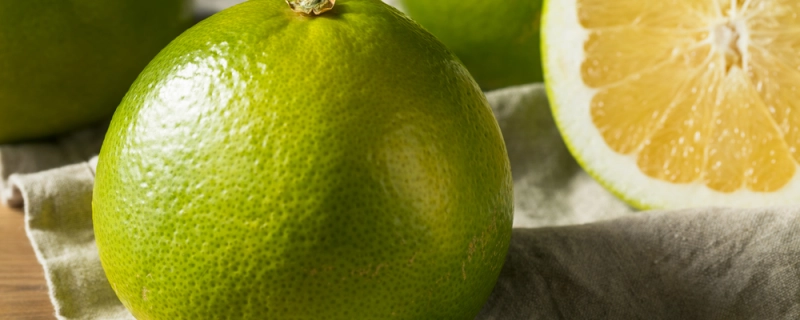
Nutritional Insights:
Sweetie is nutritionally rich, providing significant vitamin C, dietary fiber, antioxidants, potassium, and trace minerals. Regular consumption supports immune function, cardiovascular health, hydration, and digestion. Its lower acidity and reduced bitterness make it a preferred citrus choice for individuals sensitive to acidity or bitterness.
Expert Insights & Culinary Tips:
- Pairing Recommendations: Sweetie pairs exceptionally well with avocado, seafood, fresh herbs (mint, basil), and creamy textures like yogurt or cottage cheese.
- Preparation Tips: Due to its thick rind, slicing off the peel and membrane reveals sweeter, juicier segments ideal for culinary presentations.
- Flavor Balance: Its mild acidity and gentle sweetness make it suitable for dressings, marinades, and sauces, adding subtle citrus complexity without overpowering dishes.
Interesting and Curious Facts:
- Sweetie was developed intentionally to produce a citrus fruit sweeter and less bitter than traditional grapefruit, significantly broadening consumer appeal.
- Its name, "Sweetie," was chosen specifically to highlight its distinctly sweeter profile compared to grapefruit.
- Though Sweetie retains a greenish rind even at peak ripeness, this coloration does not indicate immaturity; it is a distinctive genetic trait inherited from its pomelo parentage.
Harm and Dietary Considerations:
Sweetie fruit is safe but should be consumed cautiously by those allergic to citrus. Individuals taking medications sensitive to grapefruit (such as certain cholesterol-lowering drugs) should limit intake due to similar interactions. Moderate consumption is recommended during pregnancy.
Religious Dietary Considerations:
Sweetie is permissible and fully acceptable within all major religious dietary frameworks, including Halal, Kosher, Hindu vegetarianism, and Buddhist diets, with no known restrictions.
Final Thoughts & Sensory Journey:
Sweetie presents a harmonious balance of sweetness, delicate citrus aroma, and refreshingly low acidity. Its nuanced, gentle flavor makes it an approachable, versatile citrus, inviting enthusiasts and newcomers alike on a refined sensory journey.
Resources:
- "The Citrus Industry" by Walter Reuther, Herbert John Webber, and Leon Dexter Batchelor (University of California Press, 1989)
- "Citrus Fruit: Biology, Technology, and Evaluation" edited by Milind Ladaniya (Academic Press, 2008)
- "Tropical and Subtropical Fruits: Postharvest Physiology, Processing and Packaging" by Muhammad Siddiq (Wiley-Blackwell, 2012)

